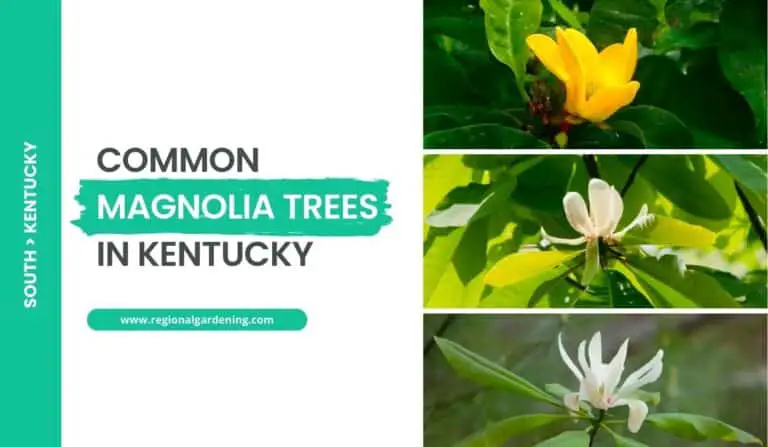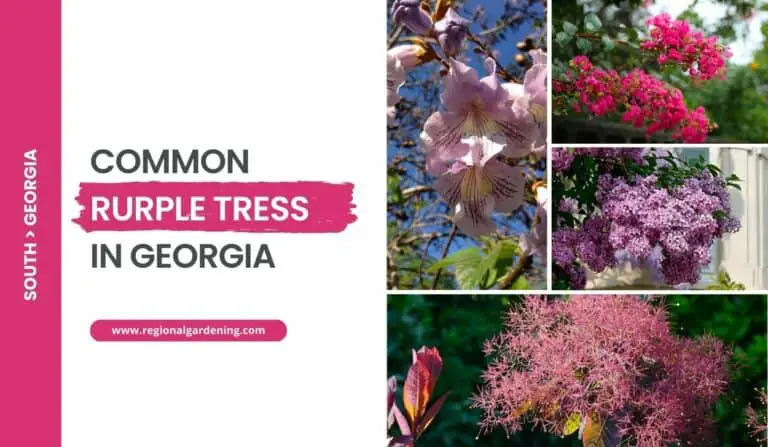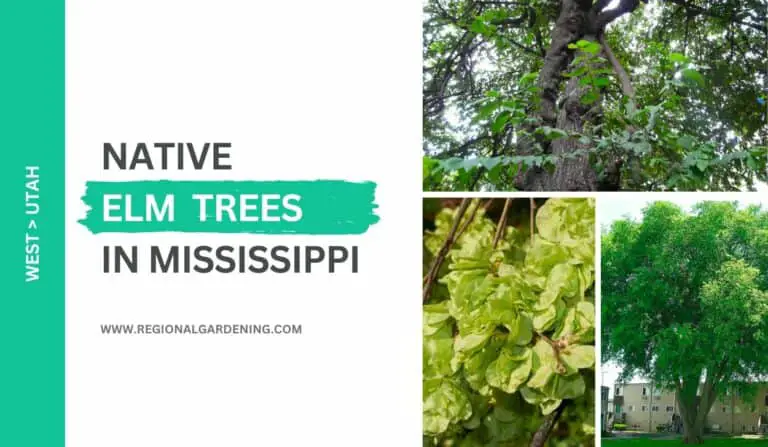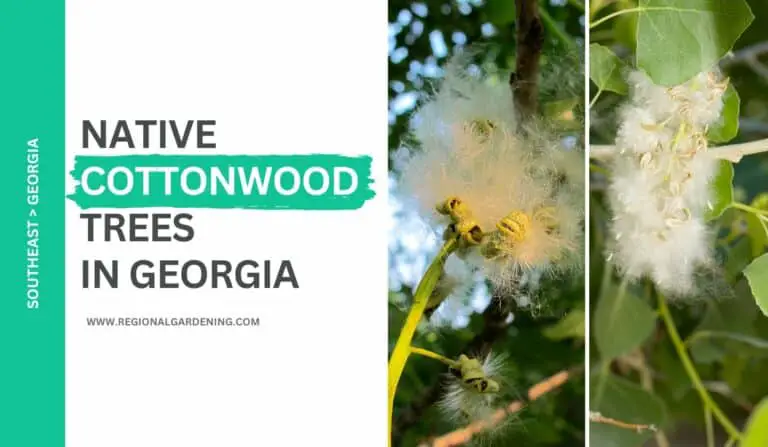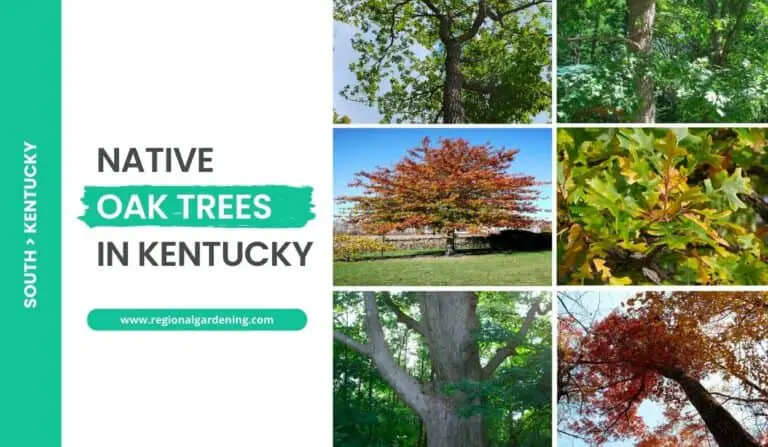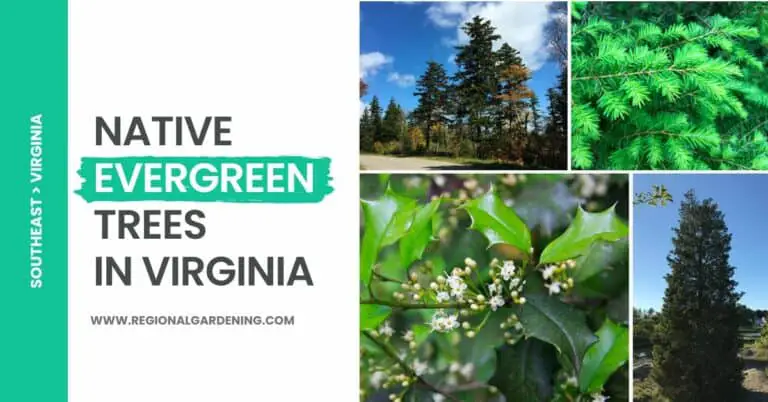5 Common Pine Trees In Oklahoma (With Photos)
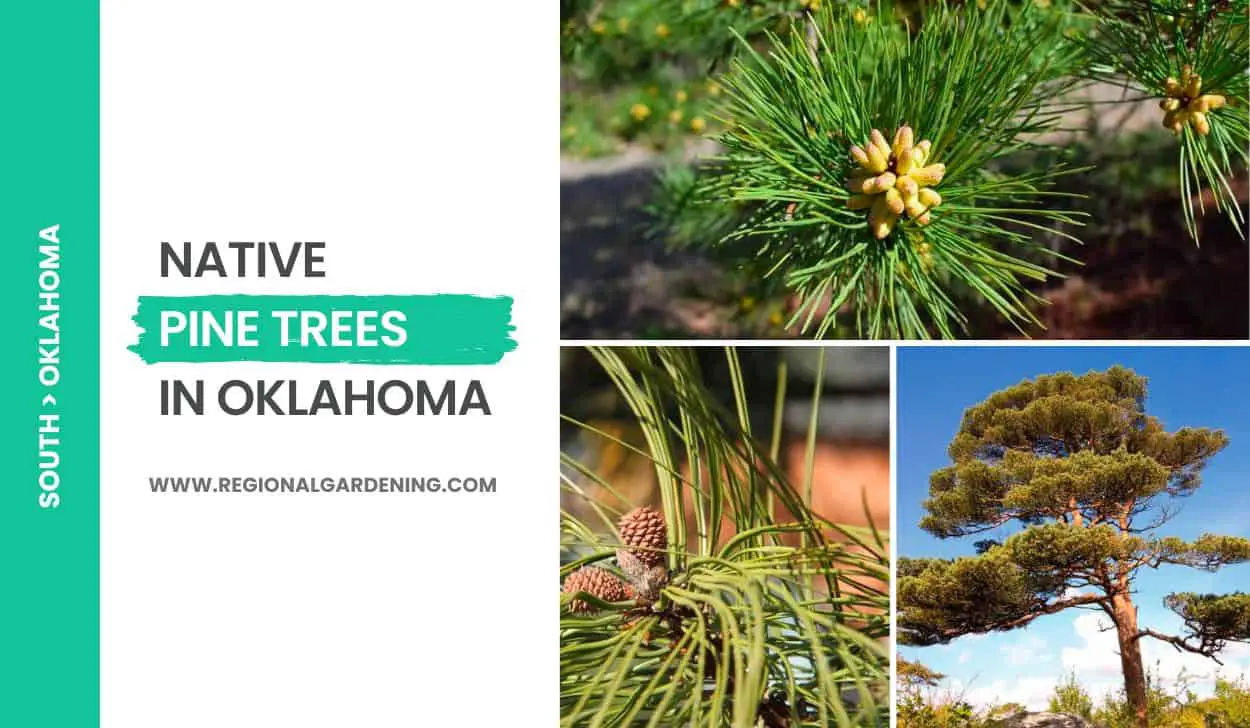
Oklahoma’s scenic landscapes are adorned with the enchanting allure of pine trees. These magnificent giants tower above the landscape, casting dappled shadows. Pine trees in Oklahoma captivate the eye with their timeless beauty, whether in the heart of forests or nestled in sprawling valleys.
However, their appeal extends beyond mere aesthetics.
Join us as we delve into the wonders of Oklahoma’s pine trees, unraveling their natural elegance and discussing their practical benefits, which are deeply rooted in Oklahoma’s history and culture.
1. Shortleaf Pine
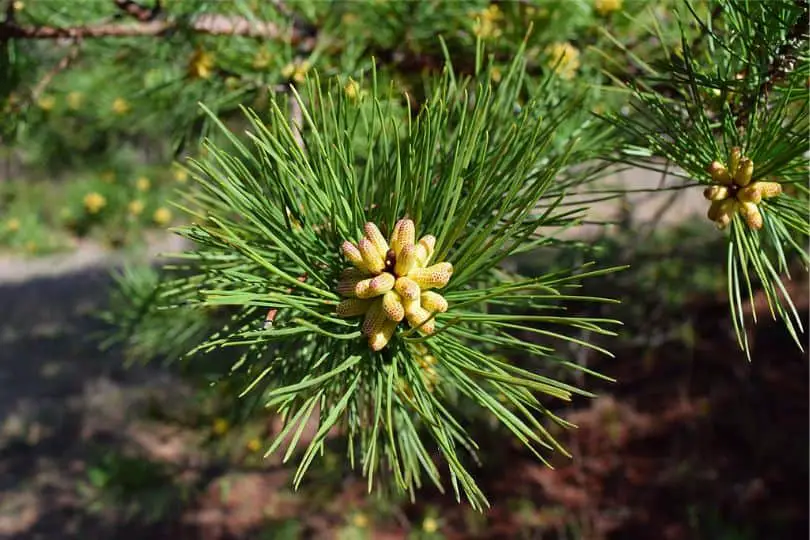
- Scientific Name: Pinus echinata Mill.
- Common Name(s): Shortleaf Pine, Yellow Pine
- Mature Height: Up to 100 feet (30 meters)
- Native Region: Eastern United States
- Flowers: No Flowers
- Fruit: Cones, 1 ½ to 2 ½ inches long, oblong with small sharp prickles
- Uses: The wood of shortleaf pine is commonly used for interior and exterior finishing, general construction, veneers, paper pulp, excelsior, cooperage, and mine props.
The shortleaf pine, technically known as Pinus echinata, is a widespread tree species found in eastern Oklahoma. It is also known as the shortleaf pine, yellow pine, or rosemary pine. It is most common in steep places, but it can establish pure stands in the plains.
The shortleaf pine has a straight and sturdy stem with slightly rising branches in its early stages. The tree matures into a tall, straight stem with an oval crown, reaching heights of around 100 feet (30 meters) and a diameter of about 12 feet (0.5 meters). This tree’s propensity to reproduce by sprouting from the stump when cut or burned back is an intriguing characteristic.
Shortleaf pine leaves are grouped in groups of two or three and are 3 to 5 inches long. They’re slim, flexible, and a dark blue-green tint. The cones, commonly known as burrs, are the smallest of any pine species, measuring 1 12 to 2 12 inches in length.
The cones are commonly crowded and have little stinging prickles. They can live for three to four years on the tree. The little seeds inside the cones are speckled and feature a wing that is most prominent around the center.
Shortleaf pine bark is brownish-red and fractured into rectangular plates. It is thinner and lighter in color than the bark of other Southern pines. Older shortleaf pine wood is recognized for its weight and toughness. It is fine-grained, yellow-brown or orange in color, and significantly less resinous than other prominent Southern pines.
Shortleaf pine wood is widely used in a variety of applications due to its qualities, including interior and exterior finishing, general construction, veneers, paper pulp, excelsior, cooperage, and mine props.
Shortleaf pine can be a significant addition to Oklahoma settings. It may grow in a variety of soil types, including clay and sandy soils. It prefers full light but will tolerate moderate shade. During dry years, this tree requires moderate watering and benefits from mulching to keep moisture in the soil.
Regular pruning may be required to keep its shape and remove dead or unhealthy branches. The shortleaf pine is a low-maintenance tree that can both provide aesthetic value and serve utilitarian needs in the landscape.
2. Scots Pine
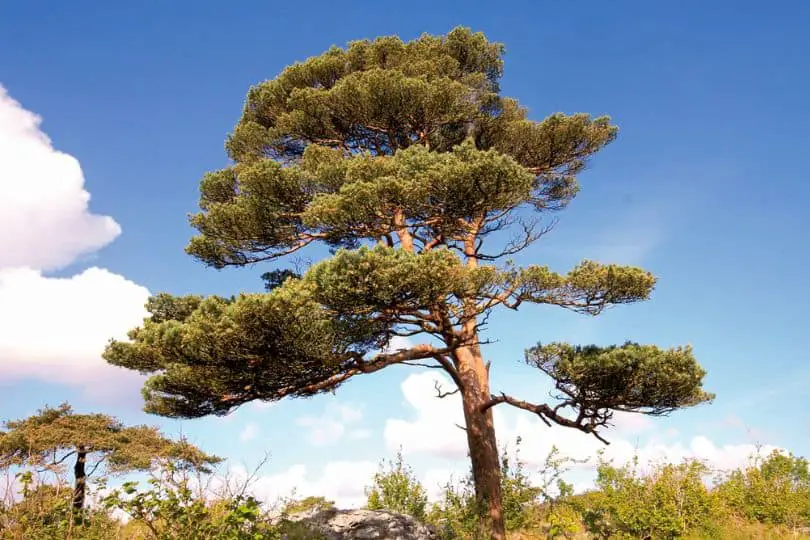
- Scientific Name: Pinus sylvestris
- Common Name(s): Scots Pine
- Mature Height: 50-80 feet (15-24 meters)
- Native Region: Europe and Asia
- Flowers: Yellowish-brown male cones and greenish female cones
- Fruit: Brown cones
- Uses: Scots Pine is commonly used for timber, construction, and as a Christmas tree. It also serves as a windbreak and provides habitat for wildlife.
Scots Pine, scientifically known as Pinus sylvestris, is a tall evergreen tree that can reach a height of 50 to 80 feet (15 to 24 meters) at maturity. It is native to Europe and Asia and has been widely introduced to other parts of the world, including Oklahoma. Its distinctive characteristic is its reddish-brown bark that exfoliates in small, thin scales.
In Oklahoma landscapes, Scots Pine thrives well in areas with full sun and well-drained soil. It can tolerate a variety of soil types, including sandy or clay soils. It is drought-resistant once established and can even tolerate periods of poor soil moisture. However, it is prone to wind damage, and proper staking may be necessary in windy areas.
Scots Pine produces yellowish-brown male cones and greenish female cones. The female cones mature to a brown color and contain small seeds. They are an important food source for birds and small mammals. The tree’s dense foliage provides excellent nesting sites for birds as well.
In addition to its ornamental value, Scots Pine is commonly used for timber and construction due to its straight, strong wood. It is also a popular choice as a Christmas tree, thanks to its classic shape and pleasant pine scent. It is often planted as a windbreak in open areas to protect against strong winds and reduce soil erosion. Moreover, due to its dense canopy, it provides shade and habitat for various wildlife species.
When growing Scots Pine in Oklahoma, it is important to provide adequate water during the establishment phase and in times of prolonged drought. Mulching around the base of the tree helps retain moisture and suppress weed growth. Regular pruning is necessary to maintain its desired shape and remove any dead or diseased branches.
3. Pinyon Pine

- Scientific Name: Pinus edulis Engelm
- Common Name(s): Pinon, Nut Pine
- Mature Height: 10 to 30 feet (3 to 9 meters)
- Native Region: Western part of Cimarron County, Colorado, Mexico
- Flowers: Male and female flowers are separate and occur on the same tree. They are not showy.
- Uses: The nuts are rich in food value and are an important article of diet for Native Americans. They are also gathered and sold as a fancy “nut” in many larger towns and cities. The wood of pinon is light, soft, close-grained, and pale brown, used for fuel and sometimes as fencing.
The pinon, sometimes known as the nut pine, is a tiny tree located in the western section of Oklahoma’s Cimarron County. It creates open woodlands across a large area stretching from Colorado south and west into Mexico. It is not a common tree in Oklahoma gardens, but it can be found locally on warm slopes or in sheltered areas.
The top of the pinon tree is bushy and contains orange-colored branchlets. Its leaves are stiff, robust, curled, and dark green, and appear in clusters of two or three. The leaves from each year’s crop remain on the tree for 5 to 8 years.
The pinon tree, like all pines, has male and female flowers on the same tree. These flowers, however, are not extremely showy. The pinon tree’s cone, or burr, is spherical and 1 to 2 inches across. It produces huge seeds or “nuts” that are half to three-quarters of an inch long.
The nuts of the pinon tree are high in nutritional value and are an essential element of Native Americans’ diet. In addition, they are collected and marketed as a decorative “nut” in many larger towns and cities. Aside from its culinary purposes, the wood of the pinon tree is light, soft, close-grained, and pale brown. It is frequently used for fuel and, on sometimes, as fencing.
Pinon trees are not typically found in gardens in Oklahoma because they are native to the state’s western regions. If you want to cultivate a pinon tree in your Oklahoma landscape, you must first evaluate its optimal habitat. Pinon trees grow well on warm slopes or in sheltered areas. They prefer well-drained soil and direct sunlight.
It is critical to supply plenty of water to pinon trees in Oklahoma during dry years. Mulching around the base of the tree might assist the soil retain moisture. Excessive trimming is also discouraged because pinon trees have a naturally bushy and compact growth habit.
4. Loblolly Pine
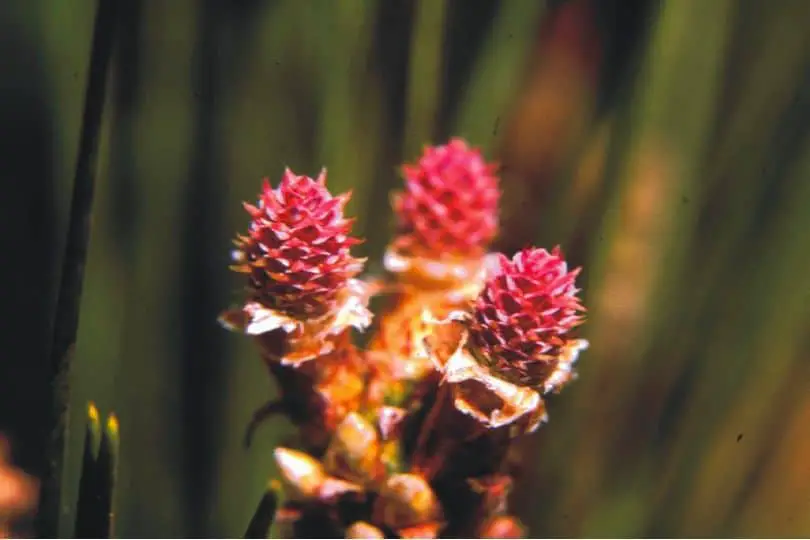
- Scientific Name: Pinus taeda L.
- Common Name(s): Loblolly Pine, Shortleaf Pine, Yellow Pine, Old-Field Pine
- Mature Height: 60-90 feet (18-27 meters)
- Native Region: Southeastern United States
- Flowers: No Flowers
- Fruit: Cones (burrs) that are 3-5 inches long
- Uses: Building material, box shooks, barrel staves, basket veneers, pulpwood, lath, mine props, piling, and fuel.
The Loblolly Pine, formally known as Pinus taeda, is a yellow pine group fast-growing evergreen tree. It is mostly found in southeastern Oklahoma, however it is not extremely abundant in the state. Shortleaf Pine, Yellow Pine, and Old-Field Pine are all names for Loblolly Pines.
The tree prefers abandoned areas with sandy soil and a high water table, where it may swiftly establish itself. It is also found in clumps along swamp edges and as scattered specimens in swamp hardwood woods.
The Loblolly Pine has a striking appearance, with black, deeply wrinkled bark that can grow to be two inches thick on bigger trees. The needle-like leaves are 6 to 9 inches long and grow in clusters of three, occasionally two. The brilliant green bunches of needles at the terminals of branches give the tree a lush appearance in the spring.
The tree produces 3 to 5 inch long cones, or burrs. Due to their inch-long wings, these cones ripen in the autumn of the second year and shed countless seeds, which are scattered widely by the wind.
The Loblolly Pine’s wood is sticky and coarse-grained, with a notable contrast between early and late wood bands, as observed in other yellow pines. Second-growth wood has a wide range of applications where durability is not required. Building materials, box shooks, barrel staves, basket veneers, pulpwood, lath, mining props, piling, and fuel are all frequent uses.
The Loblolly Pine can be a wonderful addition to Oklahoma landscapes, especially in regions with sandy soil and appropriate precipitation. Because it grows quickly, it is a wonderful choice for giving immediate shade and privacy. It is also a hardy plant that can thrive in a variety of soil conditions, including moist places near marshes.
However, when planting, keep in mind its eventual mature height, since it can grow fairly tall. Regular trimming may be required to keep the appropriate form and size.
5. Western Yellow Pine
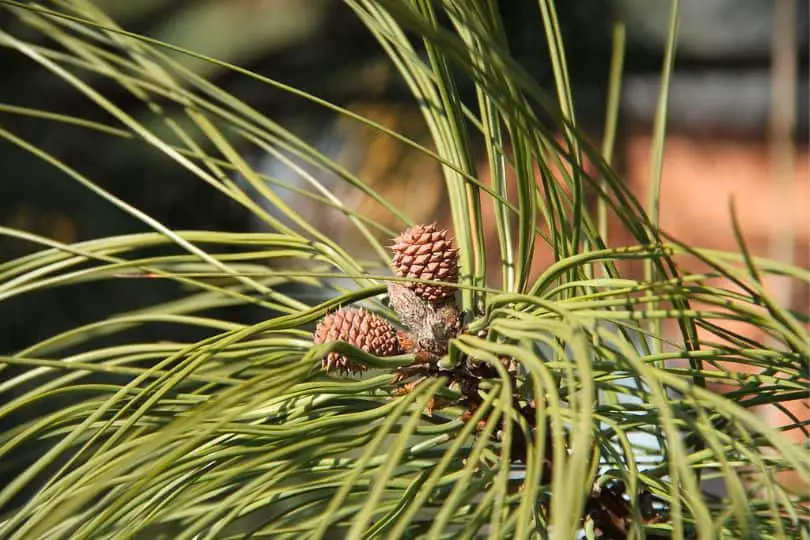
- Scientific Name: Pinus ponderosa
- Common Name(s): Western Yellow Pine, Bull Pine, Ponderosa Pine
- Mature Height: 100-150 feet (30-46 meters)
- Native Region: Western North America
- Flowers: No Flowers.
- Uses: Valuable lumber tree, commercial uses, construction, furniture
The Western Yellow Pine, commonly known as Bull Pine, is a pine tree native to western North America. In the Southwest and areas of the Pacific Northwest, it is the most significant commercial pine. This enormous and valuable timber tree is highly prized for its good quality wood and is frequently classed in the market with white pine lumber.
The leaves on the tree are generally 4 to 11 inches long and grouped in clusters of two or three. These clusters are located at the terminals of naked branches and last around three years on the tree. The broad and rounded tree tops give it a striking aspect.
The Western Yellow Pine produces reddish-brown cones, sometimes known as burrs, that are oval in shape. Cone scales are equipped with robust recurved prickles. The tree’s seeds are little, less than half an inch long, and have thin, dark purple, often speckled shells. The seeds have wings that are around 1 to 1.5 inches long.
The Western Yellow Pine can be a dramatic addition to Oklahoma settings. It prefers well-drained soil and direct sunlight. It can reach heights of 100-150 feet, making it an eye-catching feature in bigger gardens.
Its dense foliage provides good shade and serves as a home for a variety of species. It is crucial to note, however, that due to its size, the tree is not ideal for tiny yards.
Western Yellow Pine wood is of good quality, being moderately hard, robust, and fine-grained. It is pale reddish-white in color, with a thick band of practically white sapwood running across it. The wood is extensively utilized in construction, furniture making, and other commercial uses due to its durability and strength.
Similar Articles
- Maple Trees In Oklahoma
- Elm Trees In Oklahoma
- Hickory Trees In Oklahoma
- Native Oak Trees In Oklahoma
- Palm Trees In Oklahoma
- Native Cedar Trees In Oklahoma
- Common Cherry Trees In Oklahoma
- Native Ash Trees In Oklahoma
- Common Birch Trees In Oklahoma
- Native Cypress Trees In Oklahoma
Common Pine Trees In Oklahoma – Sources
The Regional Gardening team makes sure that the information in our articles is accurate by only using sources that are known to be trustworthy. Some of these sources are peer-reviewed journals from government agencies, well-known universities, and scientific research organizations.
- Forest Tree Species, Oklahoma State University Extension
- Oklahoma Trees for Gardening Resource, Oklahoma State University Extension
- Oklahoma Native Trees by County, Oklahoma Forestry Services
- Native Plant Guide, Oklahoma County Conservation District
- Plants, Seeds & Landscapes, Oklahoma Native Plant Society
- Plant Selections for Oklahoma, Oklahoma State University Extension


